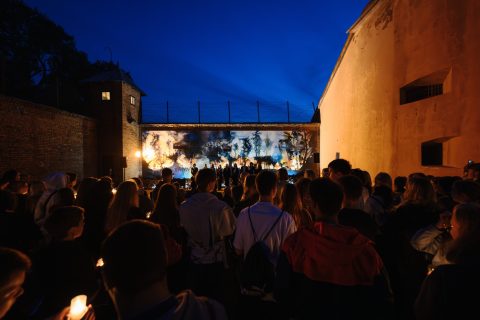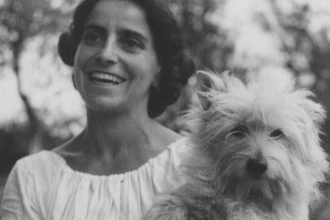The Holy Scripture claims: You did not choose me, but I chose you and appointed you so that you might go and bear fruit—fruit that will last (John 15: 16)
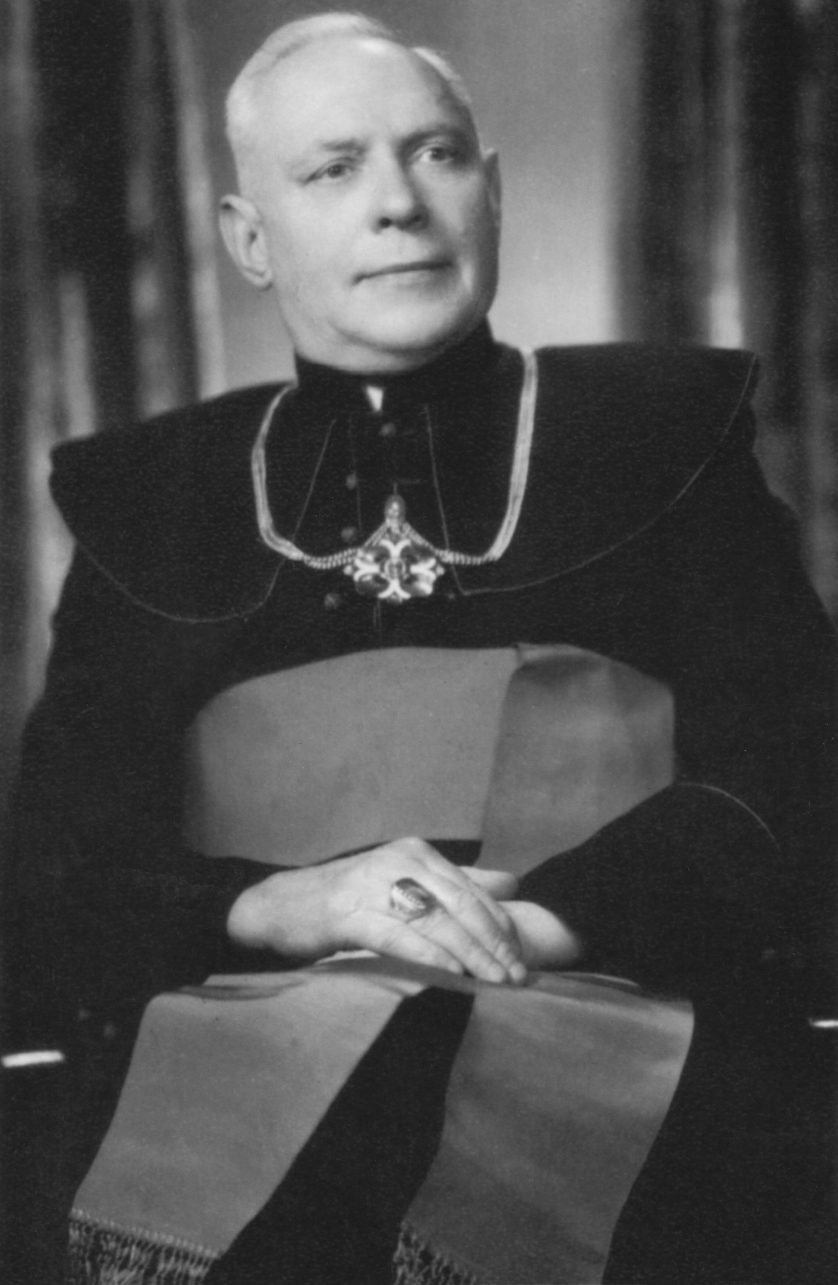
The life path of prelate and political prisoner Steponas Telksnys and his brother Vladislovas was marked by complicated twists and turns. Full of the unknown and coincidences, sometimes harder, sometimes easier, with ups and downs, with pain and joy, with unexpected twists and turns and stones on a smooth road. Each person understands and accepts destiny individually. Some people understand that it can be controlled and turned in the desired direction, while others believe that fate is determined from above and that man is powerless to change it.
Steponas Telksnys was born on October 9, 1899 in Runioniai Village, in the family of Mykolas and Marijona Telksniai, middle-class farmers of Alanta Small Rural District. He lost his mother at the age of nine. After his father remarried, the orphan was brought up and educated by his stepmother Uršulė Karvelytė-Telksnienė. After graduating from Utena Gymnasium in 1914, Steponas enrolled in the pedagogical courses of Vilnius “Ryto” Educational Society. After graduating, he worked as a teacher in Žasliai and later in Molėtai primary schools. His parents were delighted with their son’s choice: “We have a teacher from our house! How proud we are! He is not going to be a ground mole.” However, after a year of teaching, Steponas decided to give up his job at school and decided to become an agronomist, grounding his interest in farming and his desire to be closer to his family. The family was surprised by Steponas’s choice. Persuasion did not help.
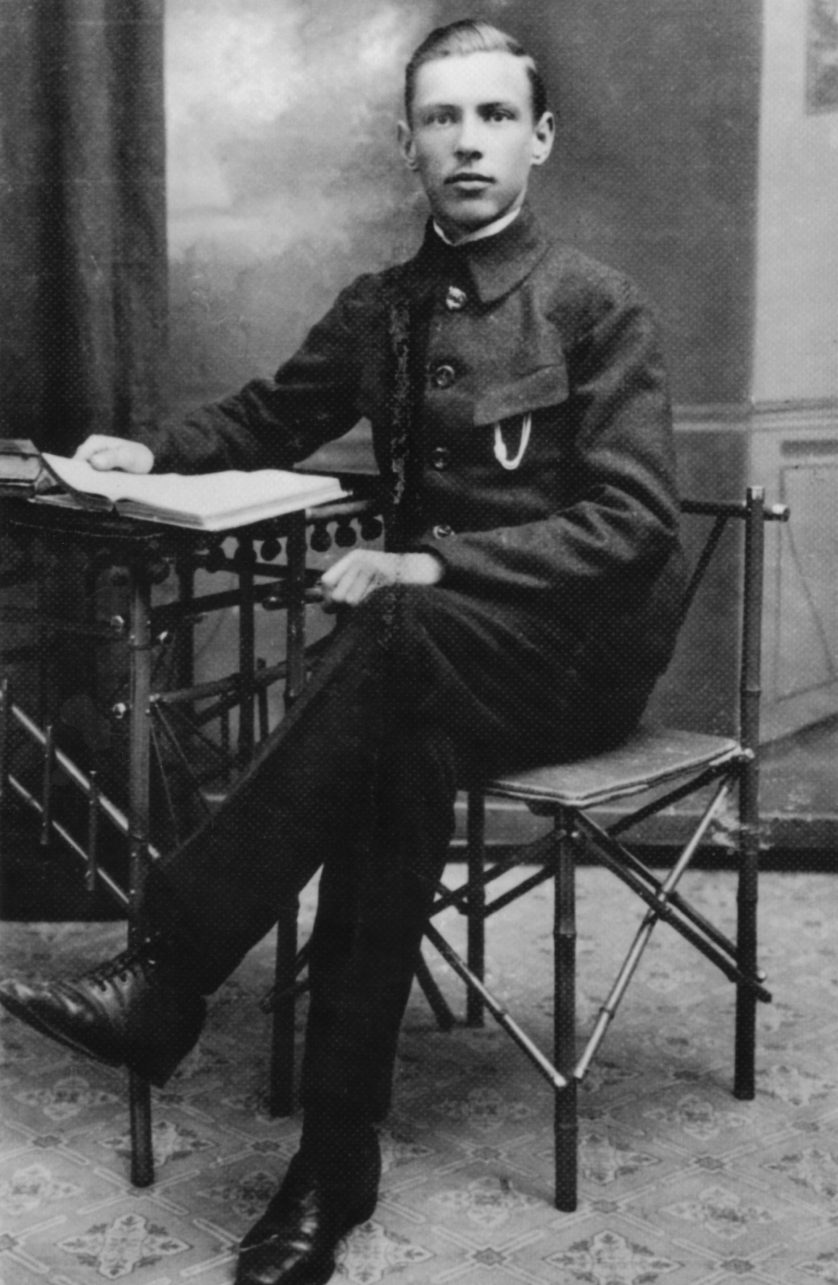
Unexpected and unplanned events in life that are beyond our control do not happen without a reason: they have a deep meaning and a corresponding purpose. By the time Steponas reached Utena on foot, the train to Panevėžys had already left. It was getting dark, and it was time to find a place to stay. Looking for a place to stay for the night, Steponas decided to knock on the parish rectory door. The priest welcomed the unexpected guest and invited him to dinner. Steponas told him where he was going and what his dream was. The priest also talked openly about his journey to the priesthood and the subtleties of priestly life. A frank conversation with a priest who was fully committed to the Gospel and who rejoiced in his choice and openly testified to it with his life, made a great impression on Steponas and turned his plans upside down. Could the priesthood have been a spontaneous choice for Steponas? Or was it fate that led him to the clerical path from an early age, only this path was winding? The future priest grew up in a deeply religious family. Steponas’s vocation as a teacher and his vocation to serve God were closely linked: it is a ministry that does not end when the doors of the school or the church close. Many priests would agree with priest Donatas Rolskis that “the vocation to walk in God’s way is invisible: it speaks from within, strengthens and leads forward. It is only a matter of responding.”
The next day, he came home and told his parents about his new idea. “I’ve changed my mind,” Steponas said in a slow but firm voice. – I’m going to enter Kaunas priest seminary.” His parents took the decision to become a priest calmly: they were neither too happy nor too discouraging.
The celebration of the first mass of the new priest, Steponas Telksnys, took place on October 15, 1922 in his home parish, Alantos Church of St James (Molėtai Region). A priest is a once-and-for-all priest; therefore, ordination is special not only for the future priest and his family, but also for the parish from which the priest comes, and for the whole church. Vladislovas Telksnys speaks about this extraordinary event, the ordination ceremony of his brother Steponas and his first celebration of the mass, in his memoir book “Nuo Kėgžlio ligi Aluntos:” “The church was full of people who came to honour the new priest. With bells ringing, the organ playing, and the church choir singing powerfully, brother Steponas (…), accompanied by the priests and dressed in church vestments, enters through the great doors. In the hands of the young priest rises Ostia – Christ. (…) The first to receive Christ from the hands of the son are his parents, brothers and sisters (…). Tears roll down my cheeks, and I lick the tears that come to my lips. They are salty.”
After the solemn service, a festive lunch was held at the Telksniai house, attended by the leaders of the Catholic Church, priests, relatives and parishioners. The preparations and ceremonies of the celebration were similar to a wedding banquet: “An unusual commotion began in our house. (…) The youth of Runioniai held wreaths from the decorated gate to the door at both sides of the pathway. (…) Dad, mum and relatives came out to meet them at the gate. (…) Priest Steponas was the first of the priests to enter the gate. He was greeted by his father (….). In the most honourable place at the table, priest Steponas sat in the crowned chair in front of everyone.” The guests present at the celebration gave speeches, welcomed the new priest, congratulated him and wished him God’s blessing.
The young priest Steponas Telksnys began his pastoral career as a vicar at the Church of the Holy Trinity in Deltuva (Ukmergė Region). At the same time, he studied at the Faculty of Theology and Philosophy of the University of Lithuania, where he obtained a theological education. Steponas not only did pastoral work, but also was involved in journalism as well as church repair work. He was particularly concerned about the spiritual education of children, and he was afraid that young people “would not be led astray by the influence of a corrupt society.” Under the pseudonym of “Tautietis”, he wrote articles for periodicals such as “Lietuvos ūkininkas,” “Ateitis,” “Pavasaris,” “Mūsų laikraštis” and “Rytas.” He prepared and published several small publications on religious and patriotic themes: “Objections to Catholic Action” (K., 1929), “The Most Important Duty of Parents” (K., 1936), “What the Holy Year Says” (K., 1933), etc. He was an active member of the Centre for Catholic Action, spiritual leader of the Catholic youth organisation “Pavasarininkai” of Kaunas Archdiocese. In 1940, under the care of priest S. Telksnys, a wooden church of the Virgin Mary was built in Užunvėžiai (Ukmergė Region) according to the project of architect Karolis Reisonas.
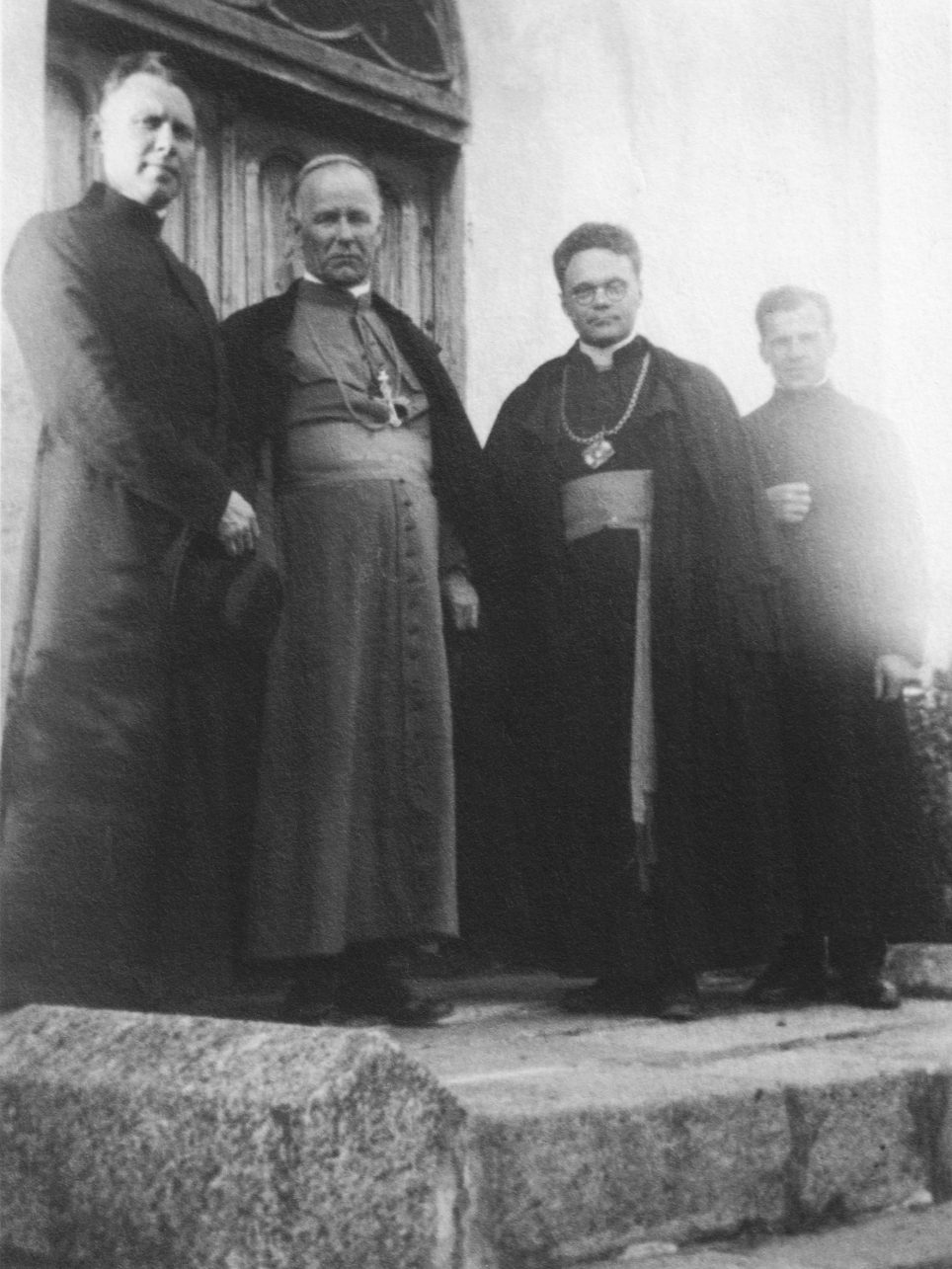
When Lithuania lost its statehood, during that difficult period of turmoil and political upheaval, S. Telksnys continued to care not only for the prosperity of the church, but also for his parishioners: he financially helped people who were in distress or who were struggling with their education because, in his own words, he himself “grew up and went to school with wooden shoes”, and, therefore, he was well aware of the problems of those who were living in similar circumstances. During the occupation of Nazi Germany, Telksnys actively participated in actions of resistance to the occupying power, and prevented the mobilisation of Lithuanian youth into Nazi Germany’s military units or the Reich labour service. In cooperation with the Red Cross Committee, he provided assistance to victims of the war. In 1944, for his services to the church, S. Telksnys was awarded the title of honorary canon of Kaunas Metropolitan Capitula and appointed as a rector of the Church of St. Peter and Paul in Šiauliai.
On July 27, 1944, retreating Nazi special forces set fire to Šiauliai St. Peter and Paul Church. The wooden parts of the building were burnt down, the art treasures, altars, organs and furniture were turned into ashes. The church building was also severely damaged by Soviet bombing and artillery shelling during the occupation of the city. Thanks to the efforts of priest Steponas Telksnys, St. Peter and Paul’s Church was covered with a temporary roof; therefore, it was possible to celebrate mass there. The faithful were able to gather in the House of God of their parish. In this way, the church was saved from complete destruction. Later, on his initiative, a committee was set up to rebuild the church. The work progressed very quickly and a year later the faithful were again able to gather in their parish house of worship.
In the summer of 1944, as the front line retreated to the West, it became clearer every day that Lithuania was facing political control and repression from Moscow. Uncertainty, the feeling of anxiety and the thoughts of imminent danger began to oppress the Telksniai family. Vladislovas had to go into hiding to escape the repression of the Soviet authorities, and Steponas also did not look reliable to the Soviet atheists.
Priest S. Telksnys wrote about the consequences of the armed coup in Russia in October 1917 in the brochure “Who Are We?” (K., 1932): “There are countries such as Russia, Mexico, etc., where Catholic schools are restricted by state law, closed (…), where Catholics are discouraged or even persecuted (…). In Russia, almost the entire clergy and thousands of believers have been killed (…)”. As the front line approached, Metropolitan Juozapas Jonas Skvireckas and Bishop Vincentas Brizgys, close friends of Steponas Telksnys, left Lithuania for Germany in a mood of uncertainty and fear. From the very first days of the second Soviet occupation, the clergy were surrounded by security agents and informants. When the Soviet security arrested Vicar Antanas Lileika in Šiauliai in October 1946, S. Telksnys went into hiding. “The fate of my brother priest Steponas is similar to mine,” wrote Vladislovas Telksnys in his book of memories, “33 Years with a Different Name. Since 1946, he has been trying to get away from a gang of detectives, hiding out with one or another good friend. He even reached Leningrad. December 15, 1949 was his last day of freedom.”
Systematic repression of politically unreliable clergy was especially intensified after the suppression of the partisan movement. The Church became the main obstacle to the forced collectivisation and to the implementation of the programme of building a communist society. During the second Soviet occupation, almost a third of the clergy who remained in Lithuania were victims of major repression.
Steponas Telksnys was housed in the rectory of Aukštelkė (Šiauliai Region) church of priest Mečislovas Dambrauskas. From 1947 to the end of 1948, he lived in Šiluva with priest Povilas Paulius Katelė (nickname Katela), and with the help of Jonas Mickevičius, he obtained a fictitious passport under the name of Pranas Misiūnas and moved to Vilnius. Feeling insecure and under accumulating inner tension, Steponas left Vilnius for Leningrad (now St Petersburg, Russia). Here he hoped to find help from priest Juozapas Kazlas from Alanta, but his life in Leningrad was in danger. His every move was closely watched, the local authorities and the KGB interfered in the church’s activities and persecuted the faithful. Even if he wanted to, priest Juozapas could not give shelter to his close friend, a fellow countryman, Steponas.
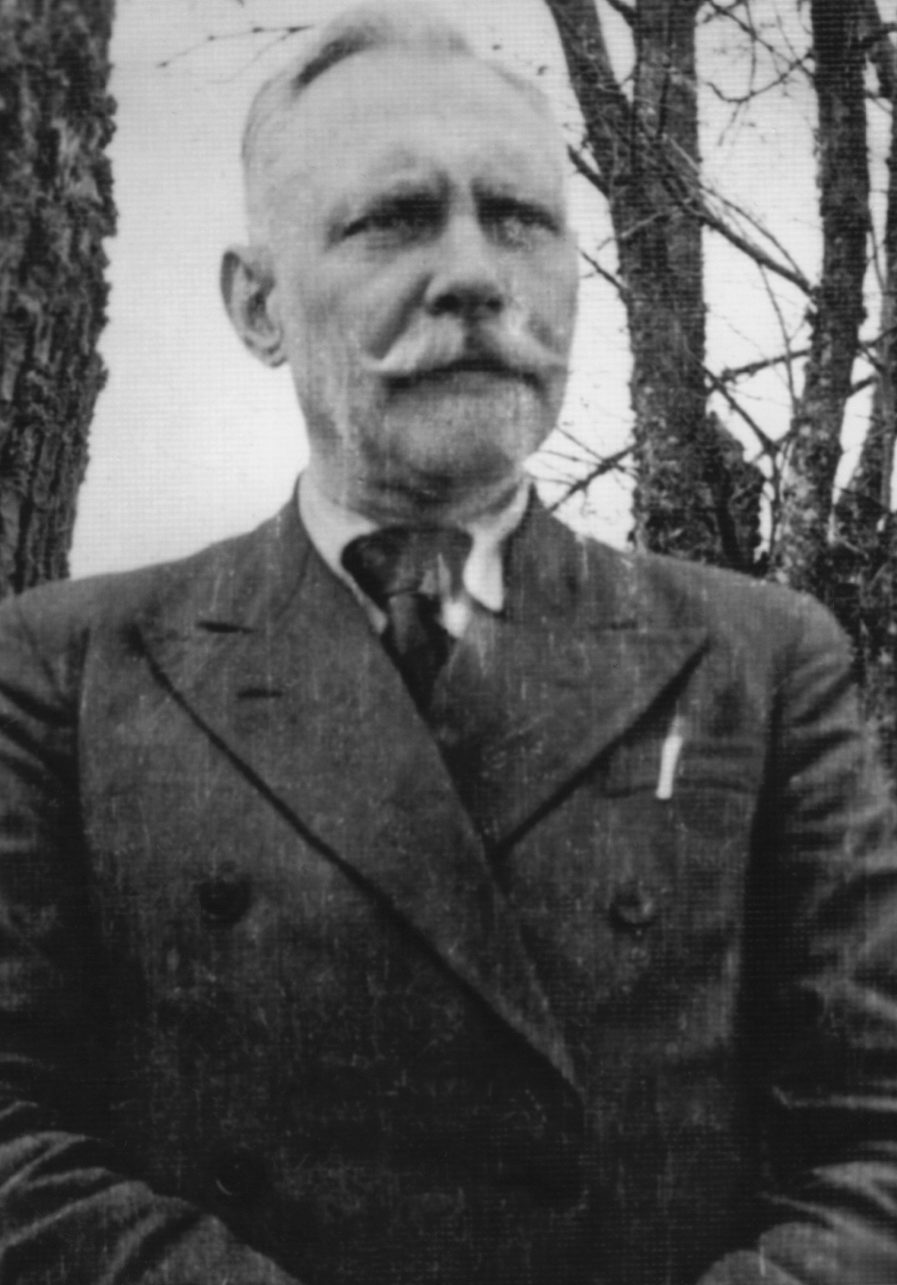
Many Lithuanian priests went into hiding in Riga and Leningrad to escape Soviet security repression: in the major border cities of the Soviet Union, priests were looking for opportunities to go abroad. However, due to the complete control of the population and the wide network of agents, hiding in such cities was not successful. On his way back to Lithuania, Steponas was ambushed and arrested at Leningrad railway station. One of the most famous traitors in Lithuanian history, Juozas Albinas Markulis, recruited by Soviet agents, helped to identify and arrest Telksnys.
Priest Steponas Telksnys had to endure almost a year of physically and spiritually debilitating interrogation in Vilnius Lukiškės Prison. The interrogations would begin late in the evening or even at night and last for several hours or more. For example, the criminal case No. 34776/3/ of Steponas Telksnys reads: “On December 21, 1949, the interrogation began at 21:30 and finished on December 22, 5:20.” The priest was accused of having published brochures during the interwar period, of having participated in the Catholic Action Centre, and of having been an active member of the Christian Democratic Party during the “Smetona regime” (“сметоновского режимa “). Steponas Telksnys was sentenced to 25 years’ imprisonment in a labour camp under Article 58-3-10-13 of the Criminal Code of the Russian TFSR. On October 10, 1950, he was transported from Vilnius Lukiskių Prison to Sosnovka Camp No. 385/7 in Mordovia, Russia.
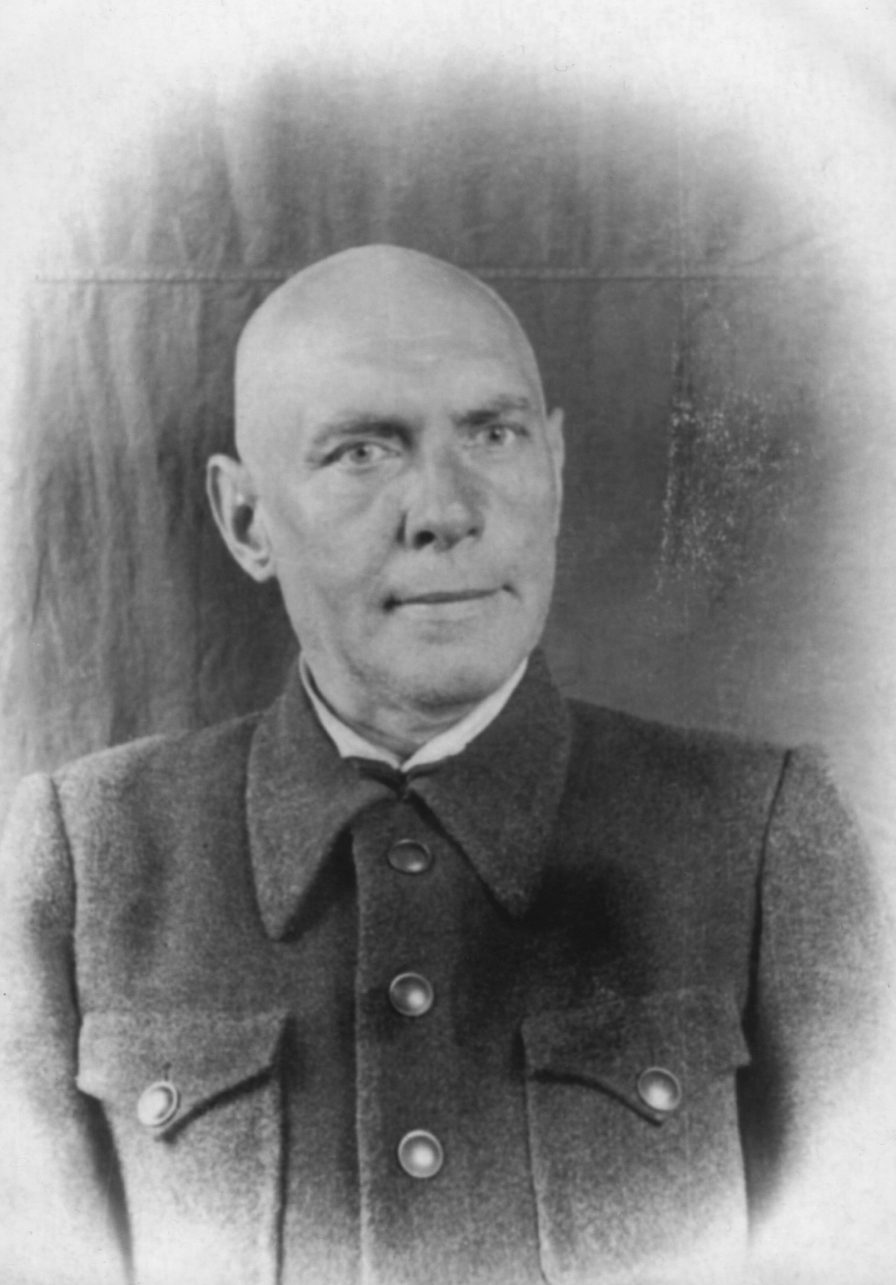
Disaster does not walk alone. Shortly after Steponas Telksnys was sent to the camp, his sister, Stefanija Telksnytė-Šližienė, a teacher, was summoned to Šiauliai City Education Department. Stefanija, who had worked as a teacher for fifteen years, was dismissed from her teaching position because “her brother Vladas was missing and her other brother, a priest, was being held in the camp.” She was told sternly, “You cannot work as a teacher with this characteristic.” Avoiding repressions, S. Telksnytė-Sližienė moved from Šiauliai to Kaunas and got a job as a worker in a book base.
After Stalin’s death, the Soviet regime took a step towards easing restrictions on human rights, with mass reviews of cases, the release of prisoners from the camps, and the release of deportees. In many cases, harsh sentences were reduced to the time actually spent in the place of imprisonment. On September 5, 1956, by a decision of the Supreme Soviet Commission, Telksnys’ sentence was reduced to 7 years, and on November 1 he returned to Lithuania. After his return from the camp, the Soviet authorities registered him as a retired priest of Veliuona parish (Jurbarkas Region) of the Church of the Assumption of the Virgin Mary with no ecclesiastical duties in the parish. This allowed to limit the contacts of the returned exile with other clergy and to monitor him.
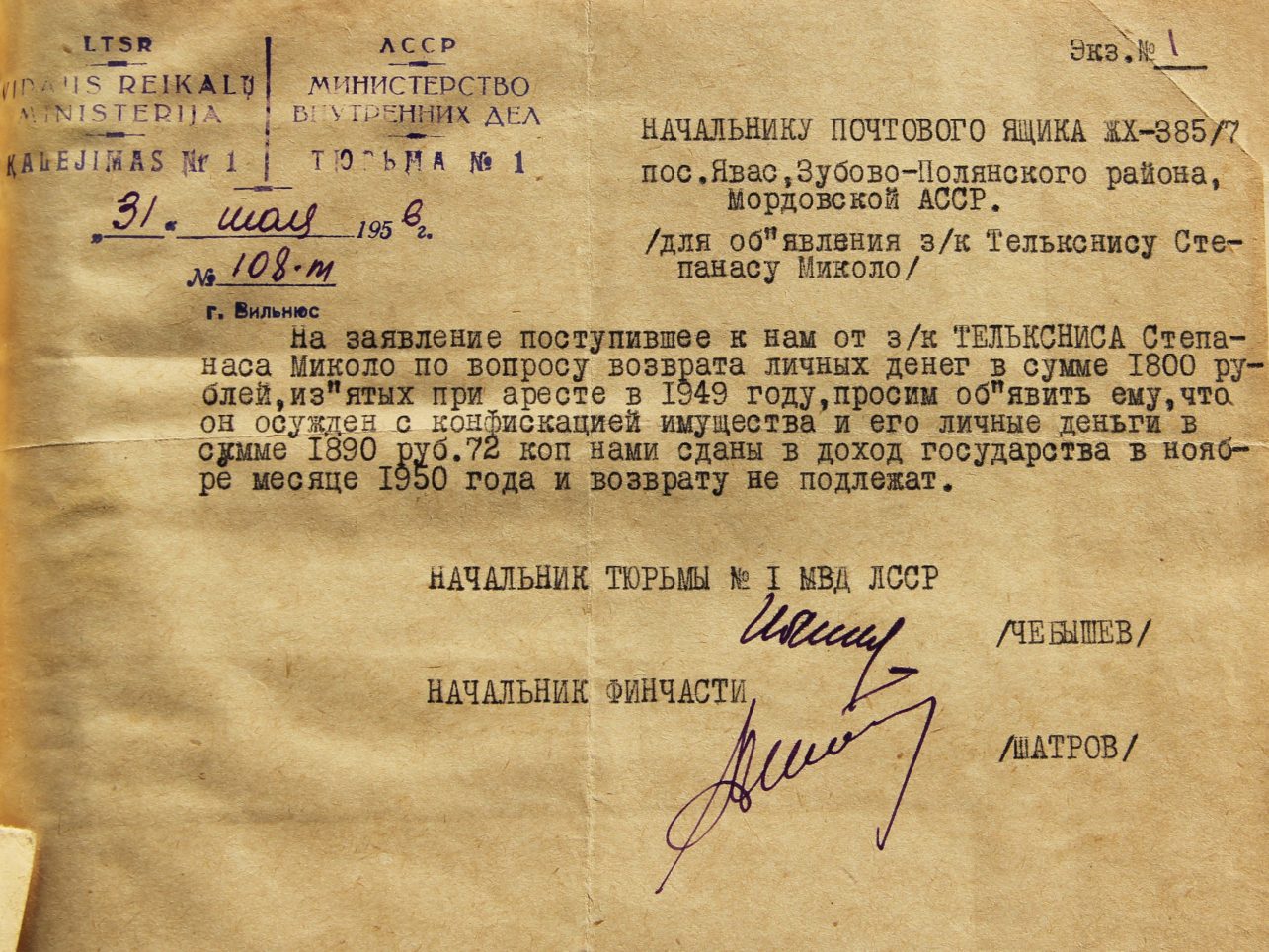
In 1958, Archbishop Metropolitan J.J. Skvireckas, who lived in Austria, conferred on S. Telksnys the title of Canon Concionator of the Metropolitan Capitula of Kaunas Archdiocese. In 1962, S. Telksnys began to serve as Chancellor of Kaunas Archdiocese and the Diocese of Vilkaviškis, and to teach Holy Scripture at Kaunas Priest Seminary. In 1972, Pope Paul VI of the Roman Catholic Church honoured the priest for his dedication to the Church: on the occasion of the 50th anniversary of his priesthood, the Pope conferred on him the title of prelate.
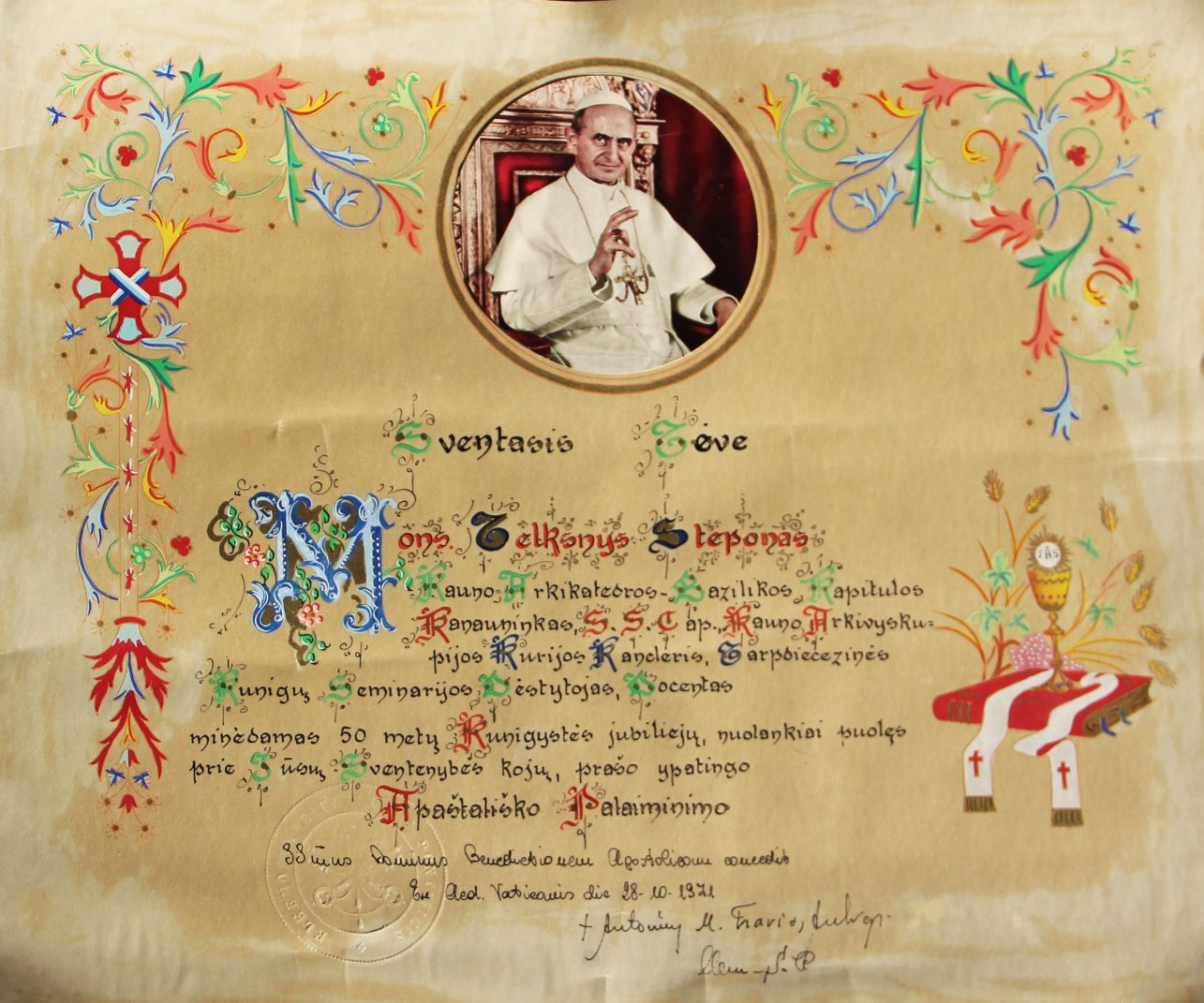
The fate of Steponas Telksnys, who devoted himself to priesthood, shows how much each of us can do by faithfully responding to his or her vocation.
Life is hard and full of dangers. Priests, dedicated to their work, have always helped people to come to terms with themselves, to overcome the feeling of helplessness and emptiness, so that they do not build a wall of silence, but live in hope and believe wholeheartedly in what they are doing. No matter what faith one professes, poor or millionaire, down on his luck or fortunate, everyone can open the doors of the Church in a difficult moment of life. In today’s tense geopolitical situation, with the threat of a new war and a sense of insecurity, it is crucial to receive spiritual support in time, to be listened to and to regain trust in people.
P. S. Saint Francis of Assisi taught his brothers in the faith to pay great respect to the institution of the priesthood and to the Eucharist, saying: “If I should happen to meet a saint who has come down from heaven and a poor priest, I would first of all greet the latter and would like to kiss his hands.”

